Our first stop was not a National Park but a charming little coastal village, Newport. Oregon. The coast is spectacular with its surf and craggy rocks, lighthouses and fog.
National Parks of the Northwest
September 2008
[if the cursor changes into a 'hand' over a picture you can click to see a larger version of that picture, then
click the 'back' arrow to return to the main site ]
Our first stop was not a National Park but a charming little coastal village, Newport. Oregon. The coast is spectacular with its surf and craggy rocks, lighthouses and fog.
One highlight of this short stop was an opportunity to do some glass blowing. We thought that the glass blowers would do all the work and merely let us hold onto the tools but no… we chose our colors and did all the work ourselves under close supervision.
We continued on to Portland to attend the wedding of Jon's cousin's step-daughter and then headed east along the Columbia River- a national scenic area, which includes Mount Hood, over 11,000 feet and the Dalles Dam. We spent the night at the Dalles which was the
western terminus of the Oregon Trail. From this point all western travelers and their wagons had to proceed towards the coast on rafts, down the Columbia River and through treacherous rapids now hidden by the waters behind the dam.
To our surprise, eastern Oregon is quite similar to California’s high desert- very dry and barren.
In Idaho we visited our first park, Craters of the Moon, which is 1,100 square miles of lava flows, cinder cones and lava vents.
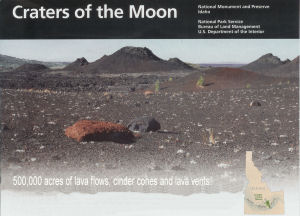
It contains more basaltic volcanic features than any other area of its size in the continental United States. The most recent volcanic activity here occurred about 2, 000 years ago but the lava flows go back 15,000 years! The aerial view gives you and idea of its size.
Interestingly, Hawaiian names for the different kinds of lava are used. There is pahoehoe, the smooth lava and ‘a’a which
refers to the sharp, rough type.
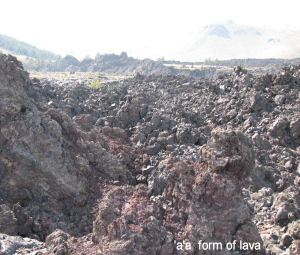
Lava appears in all sizes and shapes! The cinder cones were enormous as you can see. And one brave little plant decided to live there!
The caves are actually lava vents that were formed during eruptions. Some are large enough for visitors to enter and climb around but it can be very dangerous with the sharp and unstable rock all around.
As seemingly desolate as this land may appear, there are over 300 species of plants and many different species of animals that exist here. Springtime brings thousands of wild flowers to the cinder fields and slopes of the cones.
Our next destination: Yellowstone National Park- America’s first national park established in 1872. It takes its name form the gold-colored cliffs of the Yellowstone River Canyon. It is unique for having the largest concentration of geothermal features in the world: hot springs, mud pools, fumaroles, and geysers. The park sits atop one of the largest, active volcanoes on earth but it last erupted some 640.000 years ago. It left a caldera 28 miles wide and 53 miles long ( the outline ofthe caldera is visable on the larger version of the map below) which makes up a significant portion of the park. We spent fivedays exploring the areas of the park accessible by road and short hikes- this meant that we missed 95% of the park area! Still, what we saw was spectacular...

We encountered numerous inhabitants of the park along the way.
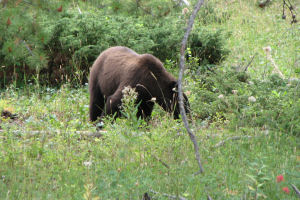
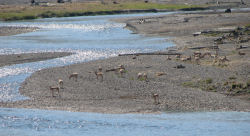
Hot pools abound, both simmering and boiling, and they emit a slightly sulfuric steam. We were warned the steam can possibly damage camera lenses; and it is not recommended to breathe the steam for extended periods of time .
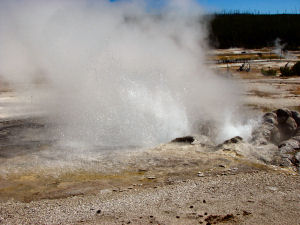
The geyser basins have raised walkways used to view the numerous geysers. 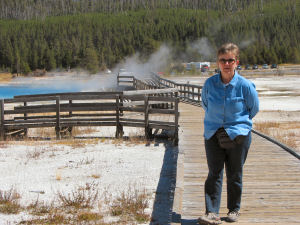
Stepping off can be extremely dangerous and some visitors who have attempted to do so have been scalded.
When the first white men visited the park area in the 1800's and saw the hot springs, mud pots and guysers, they wrote in their diaries that they thought they had discovered 'Hell."
The colors seen in and around the hot pools are created by algae and bacteria that live in extremely high temperatures. They are called thermophiles or extremophiles. Recent research appears to indicate that these thermophiles may have potential medical uses.
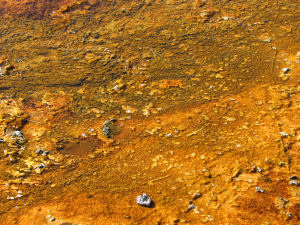
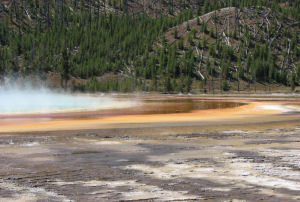
No words can really describe the scenic beauty of this park! Not only is Yellowstone filled with thermal wonders but it offers some of the most magnificent scenery...
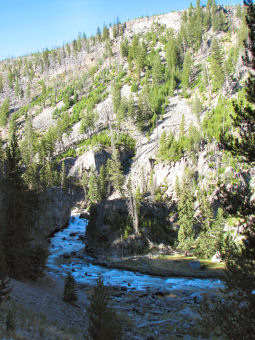
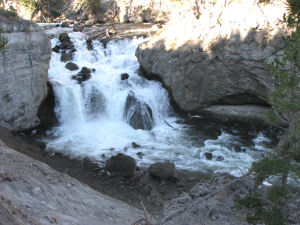

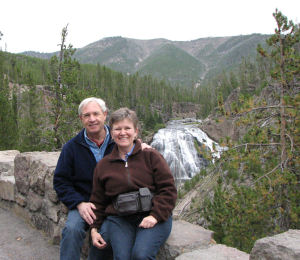
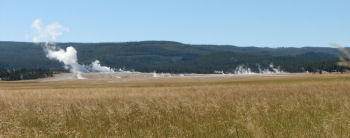
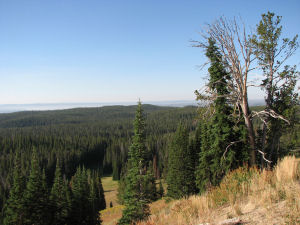
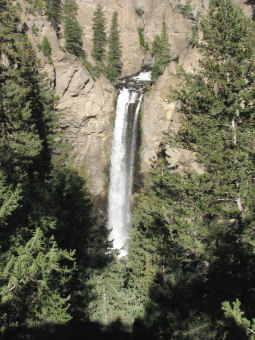
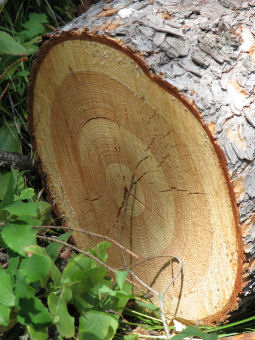
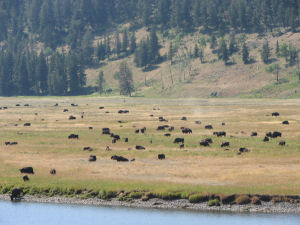
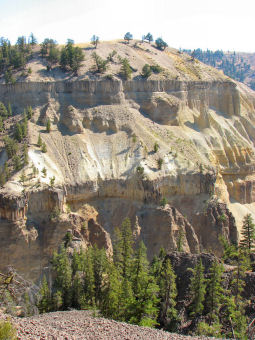
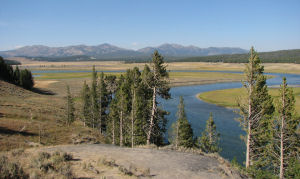
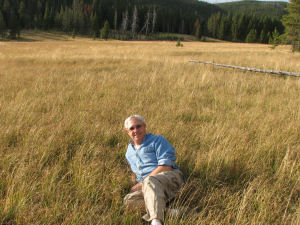
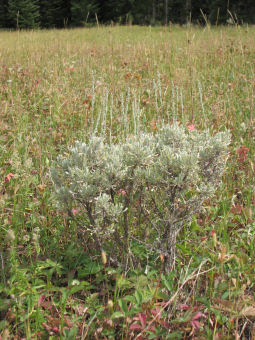

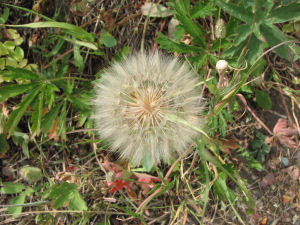
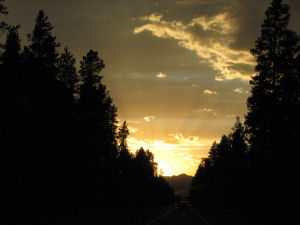
And the thermals...
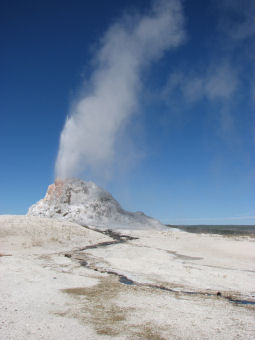
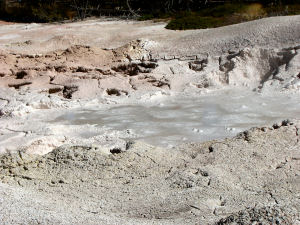

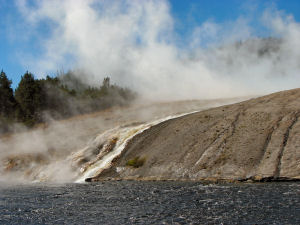
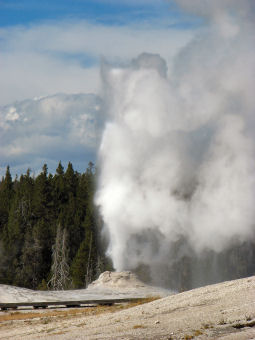
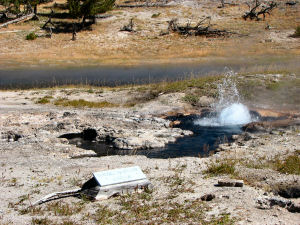
[Click here for a video with sights and sounds of Yellowstone]
Yellowstone is one of the most successful wildlife sanctuaries in the world. Its varied terrain and abundant water and vegetation provide a home for thousands of elk, mule deer, pronghorns, moose, bighorn sheep, gray wolves, grizzly bears and about 2,200 bison. Not to mention the thousands of birds and small creatures that scurry about.
Mammoth Hot Springs is recognizable by its terrace-like formations created by limestone deposits. Notice the birds standing in the hot water. They must have asbestos feet!
These photos are self- explanatory! It’s a little different from the “traffic” that we are used to. The unofficial term for this problem is a “bison jam”. Traffic can back for a quarter of a mile or more- depending on the whim of the bison.
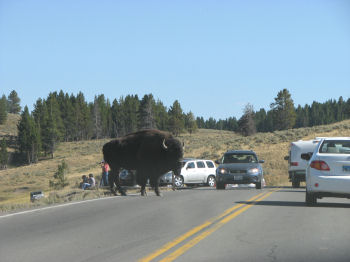
No visit to Yellowstone is complete without a stop at Old Faithful. A 120 ft water spout erupts every 80-90 minutes. This has changed recently because of volcano activity outside of the park that re-arranged the underground 'plumbing.' Sightseers are required to stay at least 300 feet away from the gguyser. It's really an impressive sight when it erupts.
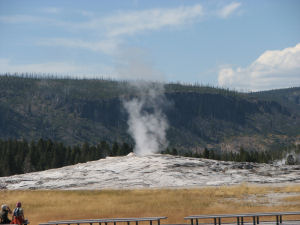 [Click here to see a video of the eruption]
[Click here to see a video of the eruption]
And this is the Grand Canyon of the Yellowstone. It was this sight that gave the park its name.
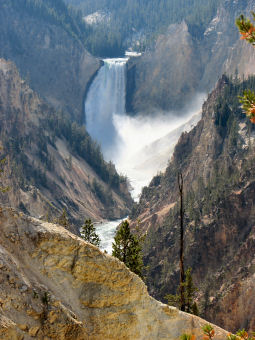
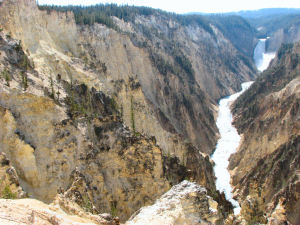
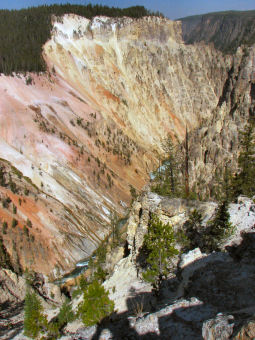
We spent close to week in Yellowstone - we easily could have spent more time there.
Then we headed south to the Grand Tetons. Among the youngest mountains on the continent, the Grand Tetons were created by tectonic action. They are called “fault mountains” as they were pushed up by the plate movement. They are rugged, steep and full of glaciers. Unfortunately, we got to experience them mostly through fog and rain which began to fall about 10 minutes after we arrived!!!

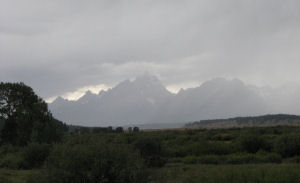
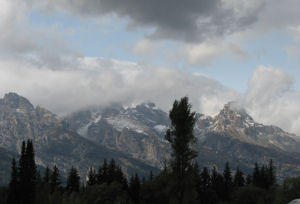
We crossed Jenny Lake in a boat- a very cold trip- and hiked back around the lake, continually enjoying the landscape, and the flora as we went.
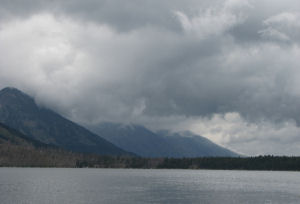
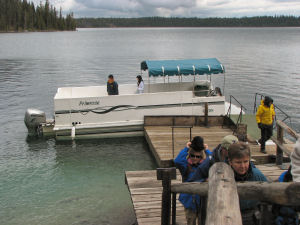
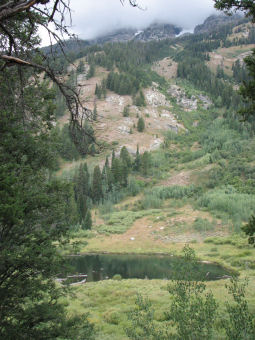
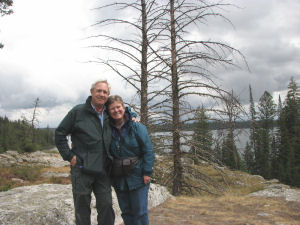

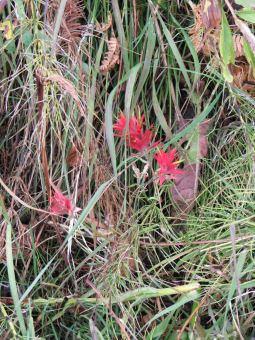
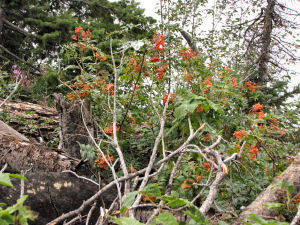

Leaving the Grand Tetons and continuing south, we stopped in a small town to visit a cold water geyser. After driving 10 miles up a narrow forest road, we hiked up along side the river and arrived at a dry cascade leading down from above. As we watched, the river began to flow and then, after a few minutes, it stopped. A most unusual phenomena.
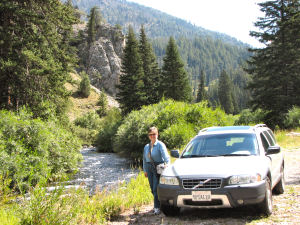
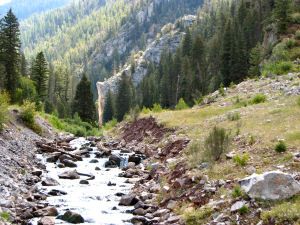
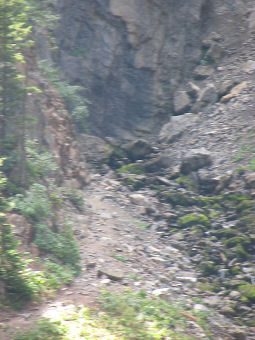
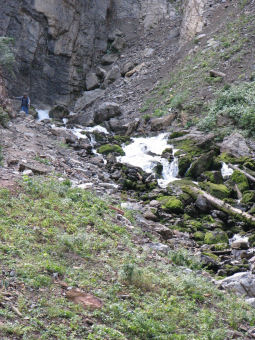
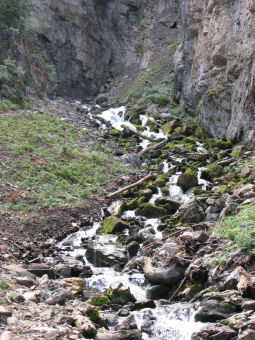
We then proceeded down through Wyoming, Utah and into Nevada towards Death Valley. Long streaches of empty road.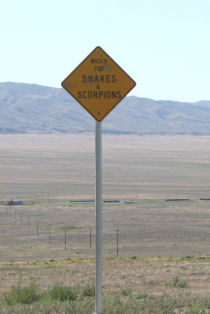
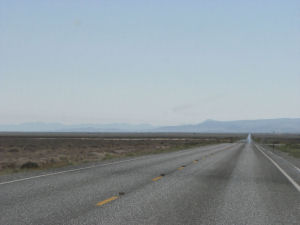
Along the way, we saw an interesting sign that lead us over a wash-board-like 10 mile dirt road to a “lunar crater” which is actually a caldera from an ancient volcanic explosion.

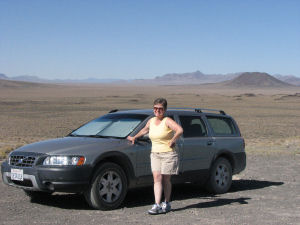
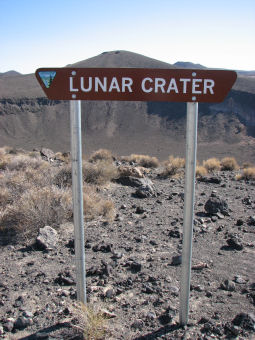

Death Valley is the lowest part of the United States, 282 feet below sea level. It’s a mostly arid valley that encompasses more than 5,000 square miles. It’s the hottest (134 degrees registered in 1913 - 120 degrees are common in the summer months) and driest place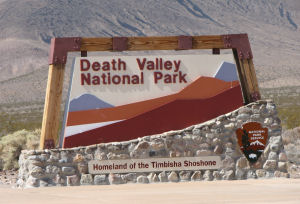 in the USA (1 1/2 inches per year) yet is home to many species of plants and animals that have adapted to the harsh climate. It is the largest designated wilderness area in the country. It was named by gold miners who attempted to use the valley as a shortcut to get to California, those who survived.
in the USA (1 1/2 inches per year) yet is home to many species of plants and animals that have adapted to the harsh climate. It is the largest designated wilderness area in the country. It was named by gold miners who attempted to use the valley as a shortcut to get to California, those who survived.

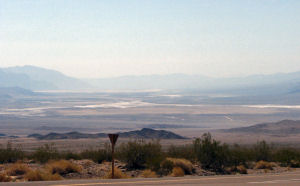
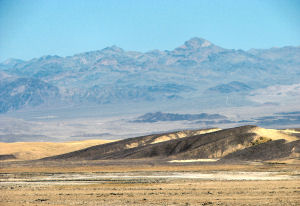
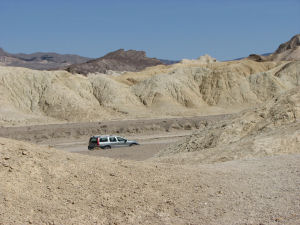
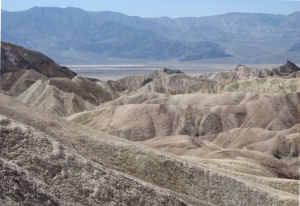
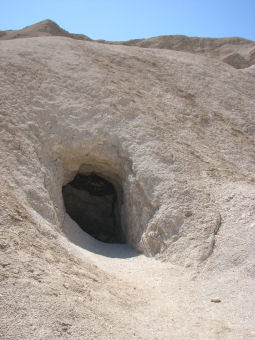
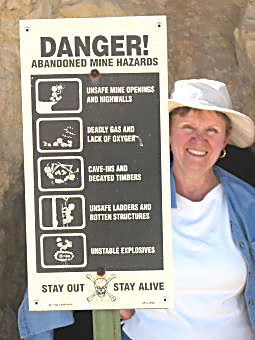
The oldest rocks are at least 1.7 billion years old and the sandstone sediments of the ancient seas have created wonderfully colorful deposits throughout the area. The only profitable, long-term mining was of borax- the origin of those ‘twenty mule teams’ 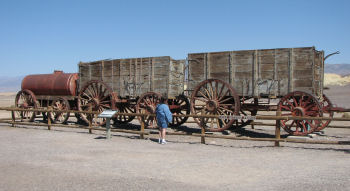 we learned about in
we learned about in 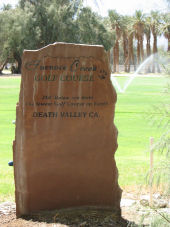 advertising and TV shows. And, as amazing as it seems, you can play golf on the valley’s bottom.
advertising and TV shows. And, as amazing as it seems, you can play golf on the valley’s bottom.
It is so hot there that even the birds stand in the shade.
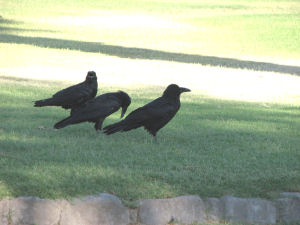
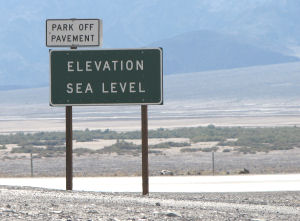
One area of the valley is called The Devil's Golf Course. It consists of dried mounds of sodium chloride...

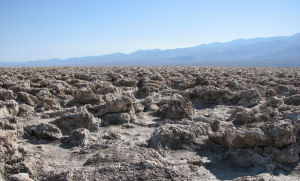
Our last stop was The Sequoia National Monument in the lower part of the Sierra Nevada muntain range – home of the giant trees.
We enjoyed this trip, but Yellowstone National Park stands out. We are looking forward to returning to 'The Yellowstone,' especially during the winter season .